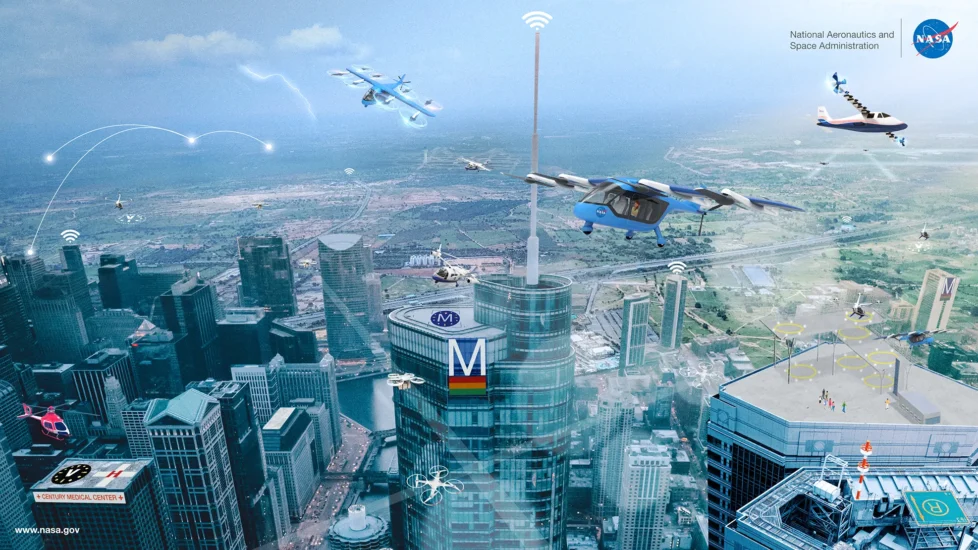UTM for UAM: Avoiding an eVTOL carmaggedon in the sky
Stay tuned: We are changing our name to AAM Today (aam.today) in the weeks ahead.
March 31, 2024 |

Urban traffic management will be critical to safe UAM operations. [Image copyright and courtesy of NASA.]
When our eVTOLs, crewed or uncrewed, take to the urban skies in our eVTOLs, it won’t be Tinkerbell our instruments will be looking to avoid hitting. NASA’s February 2024 report, “Computing Proximity to Threat Along Uncertain Trajectory to Support Urban Air Mobility,” identifies the complex, challenging environment that aircraft operators, urban traffic management (UTM) system developers, and urban traffic managers, alike will face.
The lower cruising altitude and a busy airspace are just the tip of the iceberg UAM operations will encounter. Buildings, towers, even terrain undulations (think hills and varying ground levels), make deploying a Proximity to Threat (PtT) system that can rapidly calculate geospatial threats, whether operating in a static or dynamic environment, critical to ensure safe operations, NASA says.
One for all and all for one
While the U.S. is developing its approach, so too are EU regulators and governments around the globe. Simultaneously, the International Civil Aviation Organization (ICAO) and the Joint Authorities for Rulemaking on Unmanned Systems (JARUS) are examining ways to synchronize these initiatives and provide optimal standards for national and international operating UTM standards.
Writing in the March 2024 issue of Transportation Research Interdisciplinary Perspectives, Panagiotis Aposporis, a senior security CIS & local informatics officer with Frontex, explains that to ensure the safe operations of UAVs on the scales currently being projected, many of the tasks currently performed manually will require transference to automated, autonomous systems. People, governments, will only trust that level of automation if the systems will deliver consistent results without deviant behavior. The systems will need to be robust and reliable.
Active Infrastructure
In their paper, “Air Traffic Management for Collaborative Routing of Unmanned Aerial Vehicles via Potential Fields,” Josue N. Rivera,
and Dengfeng Sun of Purdue University’s School of Aeronautics and Astronautics proposed incorporating an UTM infrastructure that actively collaborates with UAM operators in an environment that can scale up based on the number of aerial cargo deliveries on a national scope.
The idea involves governance of low-altitude airspace and would validate compliance of third-party routes by quantifiable means. Such an approach, the authors admit, may lead to suboptimal routes at times, but this may be offset by allowing UAV operators to fly at different altitudes depending on their destinations or departure times.
Static Motion
When we think about urban/advanced air mobility, we tend to think about the mobile parts — the air taxis, the package delivery vehicles, the surveying and mapping drones. But all of that, especially the unmanned systems, will rely heavily on autonomous systems without visible moving parts. Those are the parts that will keep the vehicles flying and build trust that they can do so safely and reliably.

Want to stay up-to-date with the latest urban air mobility, advanced air mobility, and eVTOL news? Subscribe to AeroCar Journal today. It’s free for a limited time!


